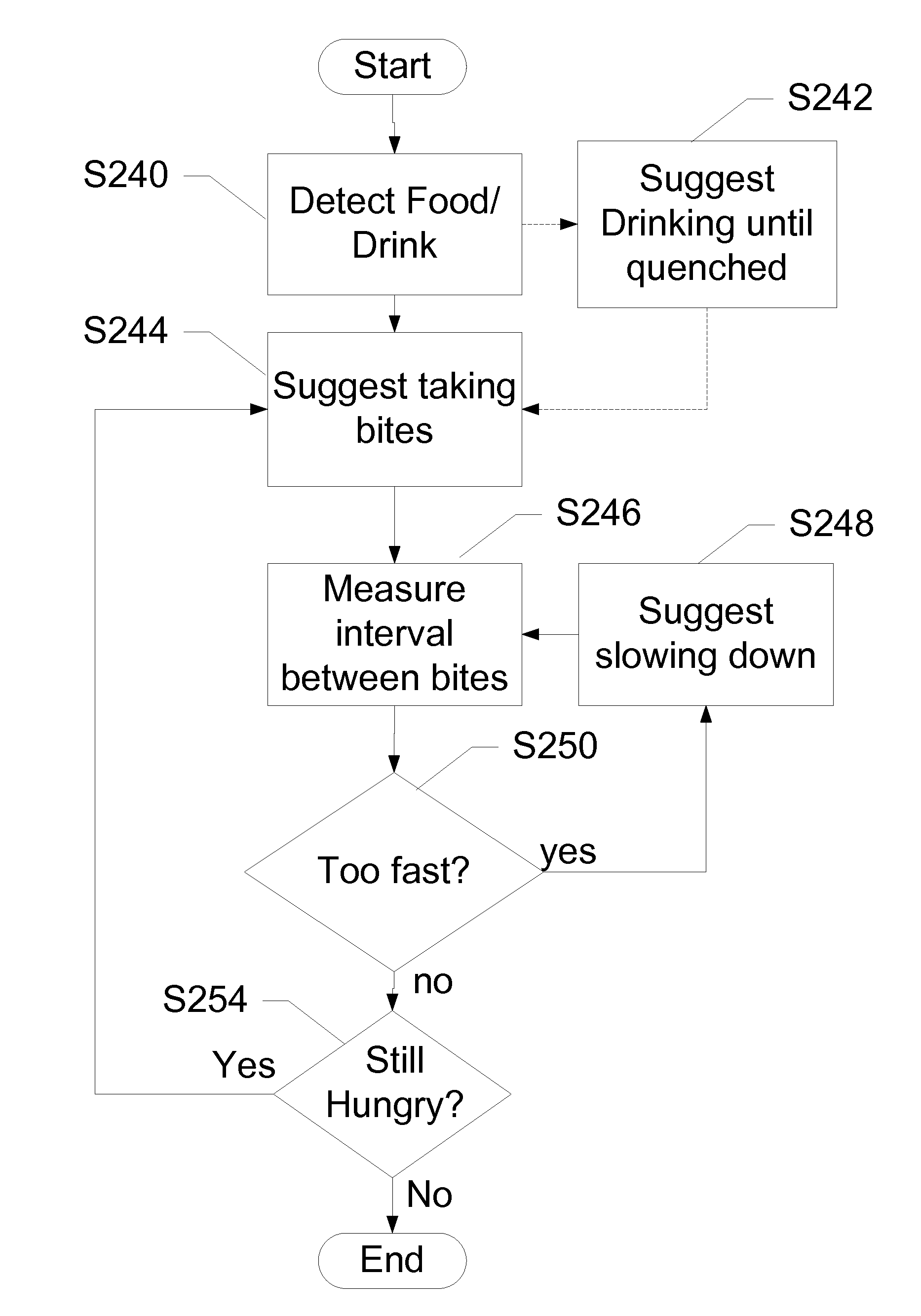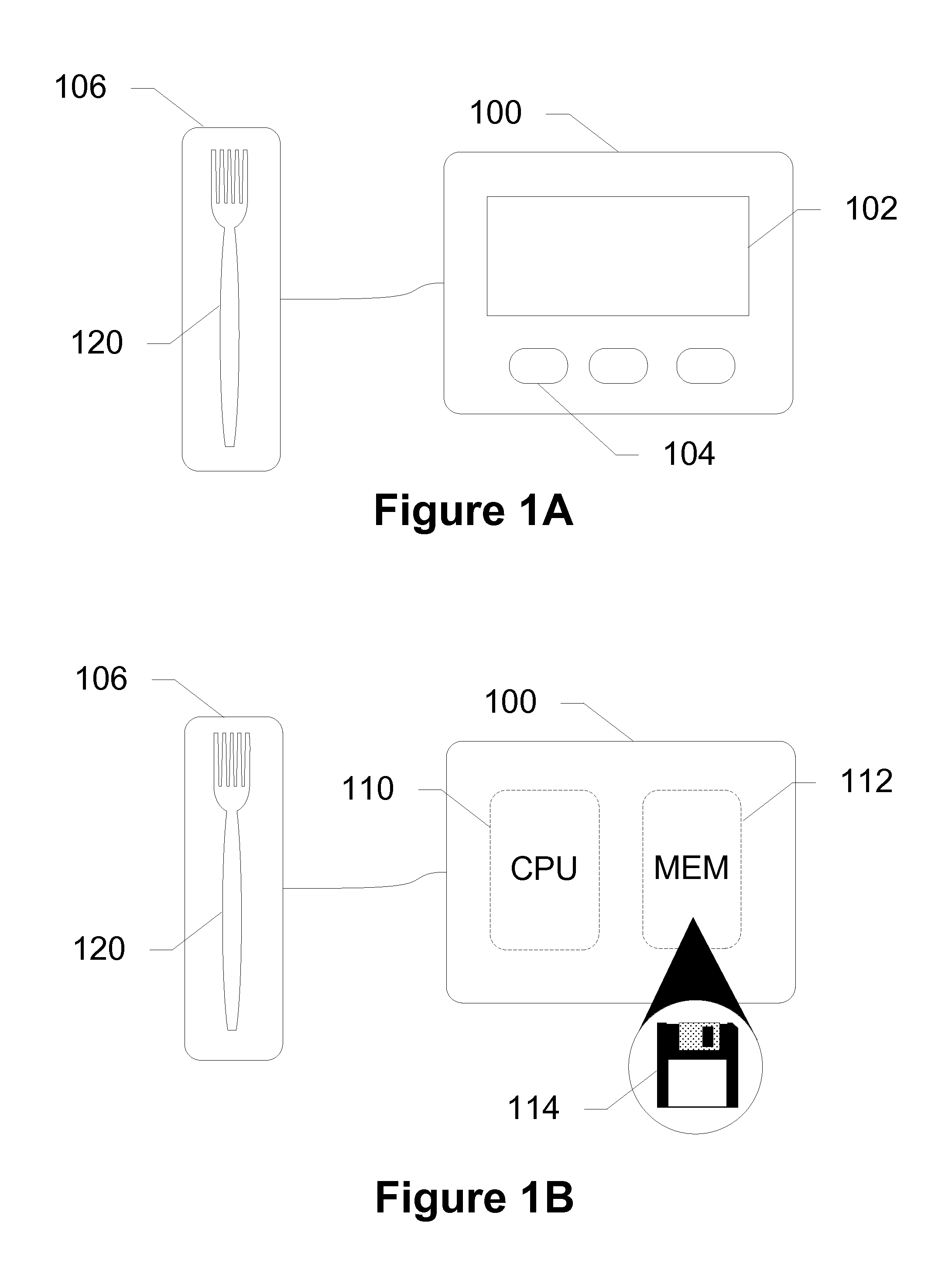Devices, Systems and Methods to Control Caloric Intake
a technology of caloric intake and devices, applied in the field of health and nutrition, can solve the problems of increasing health problems, increasing obesity, reducing life expectancy and/or health problems, etc., and achieves the effects of reducing calorie consumption, avoiding stuffing, and reducing calories
- Summary
- Abstract
- Description
- Claims
- Application Information
AI Technical Summary
Benefits of technology
Problems solved by technology
Method used
Image
Examples
Embodiment Construction
[0027]The present invention controls overall calorie consumption by monitoring a user's eating patterns and by directing the user how to appropriately consume a meal. Logic on a computer readable medium is paired with a processor and at least one sensor to determine various patterns in consuming actions performed by a user during consumption of a meal. The sensors detect a consuming action, such as by the motion of a utensil held by the user. Based on patterns determined in the user's consuming actions, the logic may determine that adjustments to the user's consumption are needed. These adjustments are communicated to the user in the form of suggestions conveyed via an output. For instance, a display outputs a message to remind the user to slow down the frequency of consuming actions, wherein the frequency is measured by detecting a utensil being picked up and set down. Users can be trained via a video, comprehensive instruction booklets, classes, etc. An initial trial or learning p...
PUM
 Login to View More
Login to View More Abstract
Description
Claims
Application Information
 Login to View More
Login to View More - R&D
- Intellectual Property
- Life Sciences
- Materials
- Tech Scout
- Unparalleled Data Quality
- Higher Quality Content
- 60% Fewer Hallucinations
Browse by: Latest US Patents, China's latest patents, Technical Efficacy Thesaurus, Application Domain, Technology Topic, Popular Technical Reports.
© 2025 PatSnap. All rights reserved.Legal|Privacy policy|Modern Slavery Act Transparency Statement|Sitemap|About US| Contact US: help@patsnap.com



